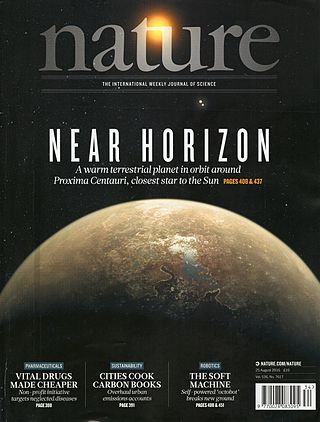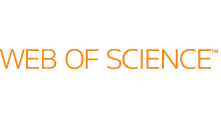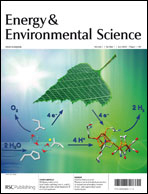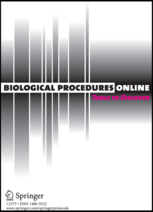
Nature is a British weekly scientific journal founded and based in London, England. As a multidisciplinary publication, Nature features peer-reviewed research from a variety of academic disciplines, mainly in science and technology. It has core editorial offices across the United States, continental Europe, and Asia under the international scientific publishing company Springer Nature. Nature was one of the world's most cited scientific journals by the Science Edition of the 2022 Journal Citation Reports, making it one of the world's most-read and most prestigious academic journals. As of 2012, it claimed an online readership of about three million unique readers per month.
The impact factor (IF) or journal impact factor (JIF) of an academic journal is a scientometric index calculated by Clarivate that reflects the yearly mean number of citations of articles published in the last two years in a given journal, as indexed by Clarivate's Web of Science.

Nature Chemical Biology is a monthly peer-reviewed scientific journal published by Nature Portfolio. It was established in June 2005 by founding Chief Editor Terry L. Sheppard as part of Nature Publishing Group. Sheppard was the Chief Editor of the journal 2004–2022. The current editor-in-chief is Russell Johnson.

Nature Medicine is a monthly peer-reviewed medical journal published by Nature Portfolio covering all aspects of medicine. It was established in 1995. The journal seeks to publish research papers that "demonstrate novel insight into disease processes, with direct evidence of the physiological relevance of the results". As with other Nature journals, there is no external editorial board, with editorial decisions being made by an in-house team, although peer review by external expert referees forms a part of the review process. The editor-in-chief is João Monteiro.

PLOS One is a peer-reviewed open access mega journal published by the Public Library of Science (PLOS) since 2006. The journal covers primary research from any discipline within science and medicine. The Public Library of Science began in 2000 with an online petition initiative by Nobel Prize winner Harold Varmus, formerly director of the National Institutes of Health and at that time director of Memorial Sloan–Kettering Cancer Center; Patrick O. Brown, a biochemist at Stanford University; and Michael Eisen, a computational biologist at the University of California, Berkeley, and the Lawrence Berkeley National Laboratory.

Proteomics is a peer-reviewed scientific journal covering topics including whole proteome analysis of organisms, protein expression profiling, disease, pharmaceutical, agricultural and biotechnological applications, and analysis of cellular systems, organelles and protein complexes. It is published by Wiley VCH and the current editor-in-chief is Lucie Kalvodova.

The Web of Science is a paid-access platform that provides access to multiple databases that provide reference and citation data from academic journals, conference proceedings, and other documents in various academic disciplines. Until 1997, it was originally produced by the Institute for Scientific Information. It is currently owned by Clarivate.

The Journal of Chromatography A is a peer-reviewed scientific journal publishing research papers in analytical chemistry, with a focus on techniques and methods used for the separation and identification of mixtures. The major difference between Journal of Chromatography A and Journal of Chromatography B is the focus being on preparative chromatography instead of analytical chromatography. The split of the Journal of Chromatography into two journals occurred in late 1993, with volume 652 being the first for Journal of Chromatography A.

Energy & Environmental Science is a monthly peer-reviewed scientific journal publishing original (primary) research and review articles. The journal covers work of an interdisciplinary nature in the biochemical and biophysical sciences and chemical and mechanical engineering disciplines. It covers energy area. Energy & Environmental Science is published by the Royal Society of Chemistry.

Biological Procedures Online is a peer-reviewed, biomedical protocols journal that is open access and published online only. Biological Procedures Online publishes protocols in research techniques and applications of existing techniques; validity analysis of research methods and approaches for judging the validity of research reports; hypothesis development and experimental design; application of common research methods; and reviews of techniques. The editor-in-chief of the journal is Bolin Liu, and the editorial board members are Marxa Figueiredo,Julie Gehl, David Gewirtz, Todd Giorgio, Ching-Hung Hsu, Sek-Wen W Hui, Robert Kapsa, Hans-Peter Kiem, Hamed Kioumarsi, Song Li, David Liberles, Vinata B Lokeshwar, Claudio Luparello, J. Michael Mathis, Lluis Mir, Tom Misteli, Craig Nunemaker, Mauro Provinciali, Rajagopal Ramesh, Paul Shapshak, and Liangfang Zhang. Chunxia Su, Shaomian Yao, Chindo Hicks, Runhua Liu, and Gangadhara R Sareddy serve as associate editors for the journal.

The Journal of Biochemistry is a peer-reviewed scientific journal that covers research on biochemistry, molecular biology, cell biology, and biotechnology. It was established in 1922 and is published by Oxford University Press on behalf of the Japanese Biochemical Society. The editor-in-chief is Kohei Miyazono. According to the Journal Citation Reports, the journal has a 2020 impact factor of 3.387.
SLAS Discovery is a peer-reviewed scientific journal published by the Society for Laboratory Automation and Screening (SLAS) in partnership with SAGE Publications. The editor-in-chief is Robert M. Campbell, Ph.D.. The journal explores how scientists develop and utilize novel technologies and/or approaches to provide and characterize chemical and biological tools to understand and treat human disease. This includes scientific and technical advances in target identification/validation; biomarker discovery; assay development; virtual, medium- or high-throughput screening; lead generation/optimization; chemical biology; and informatics. The journal was published from 1996 through 2016 with the title Journal of Biomolecular Screening. Its name changed in 2017 to more accurately reflect the evolution of its editorial scope.[1]
Scholarly peer review or academic peer review is the process of having a draft version of a researcher's methods and findings reviewed by experts in the same field. Peer review is widely used for helping the academic publisher decide whether the work should be accepted, considered acceptable with revisions, or rejected for official publication in an academic journal, a monograph or in the proceedings of an academic conference. If the identities of authors are not revealed to each other, the procedure is called dual-anonymous peer review.
SLAS Technology is a peer-reviewed scientific journal published by the Society for Laboratory Automation and Screening in partnership with Elsevier. The editor-in-chief is Edward Kai-Hua Chow, Ph.D.. The journal explores ways in which scientists adapt advancements in technology for scientific exploration and experimentation, especially in life sciences research and development. This includes drug-delivery; diagnostics; biomedical and molecular imaging; personalized and precision medicine; high-throughput and other laboratory automation technologies; micro/nanotechnologies; analytical, separation and quantitative techniques; synthetic chemistry and biology; informatics ; and more. The journal was published from 1996 through 2016 with the title Journal of Laboratory Automation. Its name changed in 2017 to more accurately reflect the evolution of its editorial scope.[1]

eLife is a not-for-profit, peer-reviewed, open access, science publisher for the biomedical and life sciences. It was established at the end of 2012 by the Howard Hughes Medical Institute, Max Planck Society, and Wellcome Trust, following a workshop held in 2010 at the Janelia Farm Research Campus. Together, these organizations provided the initial funding to support the business and publishing operations. In 2016, the organizations committed US$26 million to continue publication of the journal.

Nature Climate Change is a monthly peer-reviewed scientific journal published by Nature Portfolio covering all aspects of research on global warming, the current climate change, especially its effects. It was established in 2011 as the continuation of Nature Reports Climate Change, itself established in 2007. Its first editor-in-chief was Olive Heffernan and the journal's current editor-in-chief is Bronwyn Wake. According to the Journal Citation Reports, the journal had a 2021 impact factor of 28.862.

The Journal of Neuroscience Methods is a peer-reviewed scientific journal covering scientific techniques and protocols used in any branch of neuroscience research. It was established in 1979. The editor-in-chief is Giuseppe Di Giovanni, Professor of Neuroscience at the University of Malta and Honorary Professor at Cardiff University, UK. Journal Neuroscience Methods is published 18 times a year by Elsevier.
Tumor Biology is a bimonthly peer-reviewed open access medical journal covering clinical and experimental oncology. It was established in 1980 as Oncodevelopmental Biology and Medicine, obtaining its current name in 1984. It is owned by the International Society of Oncology and BioMarkers, of which it is the official journal. Originally published by Karger Publishers, it moved to Springer Science+Business Media beginning in 2010. In December 2016, the journal moved again, this time to SAGE Publications. The editor-in-chief is Magdalena Chechlinska. According to the Journal Citation Reports, the journal has a 2016 impact factor of 3.650.

Nature Astronomy is a peer reviewed scientific journal published by Nature Portfolio. It was first published in January 2017, although the first content appeared online in December 2016. The editor-in-chief is May Chiao, who is a full-time professional editor employed by the journal. The founding editors of this journal, in addition to May Chiao, were Paul Woods, Luca Maltagliati and Marios Karouzos.

Nature Reviews Materials is a monthly peer-reviewed scientific journal published by Nature Portfolio. It was established in 2016. The journal covers all topics within materials science. It presents reviews and perspectives, which are commissioned by the editorial team. The editor-in-chief is Giulia Pacchioni.















